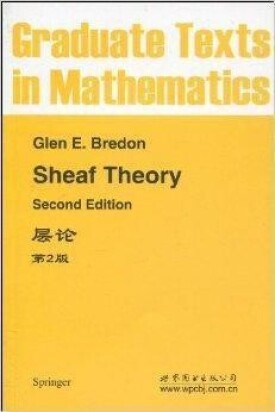共找到2條詞條名為層論的結果 展開
- 書籍
- 數學術語
層論
書籍
《層論(第2版)(英文版)》主要講述具有一般係數體系拓撲空間的上同調理論。層論包括對代數拓撲很重要的領域。書中有好多創新點,引進不少新概念,全書內容貫穿一致。證實了廣義同調空間中層理論上同調滿足同調基本特性的事實。將相對上同調引入層理論中。讀者有一定的基本同調代數和代數拓撲知識就可以理解《層論(第2版)(英文版)》。每章末都附有練習,這些可以幫助學生更好的理解書中的知識體系。附錄給出了部分習題的解答。第二版中在內容上做了較大的改動,增加了80多例子和大量更深層次的內容,如,Cech上同調、Oliver變換、插值理論、廣義流形、局部齊性空間、同調纖維和p進變換群。
《層論(第2版)(英文版)》是由世界圖書出版公司出版的。
Preface
I Sheaves and Presheaves
1 Definitions
2 Homomorphisms, subsheaves, and quotient sheaves
3 Direct and inverse images
4 Cohomomorphisms
5 Algebraic constructions
6 Supports
7 Classical cohomology theories
Exercises
II Sheaf Cohomology
I Differential sheaves and resolutions
2 The canonical resolution and sheaf cohomology
3 Injective sheaves
4 Acyclic sheaves
5 Flabby sheaves
6 Connected sequences of functors
7 Axioms for cohomology and the cup product
8 Maps of spaces
9 φ-soft and φ-fine sheaves
10 Subspaces
11 The Vietoris mapping theorem and homotopy invariance
12 Relative cohomology
13 Mayer-Vietoris theorems
14 Continuity
15 The Kiinneth and universal coefficient theorems
16 Dimension
17 Local connectivity
18 Change of supports; local cohomology groups
19 The transfer homomorphism and the Smith sequences
20 Steenrod's cyclic reduced powers
21 The Steenrod operations
Exercises
III Comparison with Other Cohomology Theories
1 Singular cohomology
2 Alexander-Spanier cohomology
3 de Rham cohomology
4 Cech cohomology
Exercises
IV Applications of Spectral Sequerices
I The spectral sequence of a differential sheaf
2 The fundamental theorems of sheaves
3 Direct image relative to a support family
4 The Leray sheaf
5 Extension of a support family by a family on the base space
6 The Leray spectral sequence of a map
7 Fiber bundles
8 Dimension
9 The spectral sequences of Borel and Caftan
10 Characteristic classes
11 The spectral sequence of a filtered differential sheaf
12 The Fary spectral sequence
13 Sphere bundles with singularities
14 The Oliver transfer and the Conner conjecture
Exercises
V Borel-Uoore Homology
I Cosheaves
2 The dual of a differential cosheaf
3 Homology theory
4 Maps of spaces
5 Subspaces and relative homology
6 The Vietoris theorem, homotopy, and covering spaces
7 The homology sheaf of a map
8 The basic spectral sequences
9 Poincare duality
10 The cap product
11 Intersection theory
12 Uniqueness theorems
13 Uniqueness theorems for maps and relative homology
14 The Kuinneth formula
15 Change of rings
16 Generalized manifolds
17 Locally homogeneous spaces
18 Homological fibrations and p-adic transformation groups
19 The transfer homomorphism in homology
20 Smith theory in homology
Exercises
VI Cosheaves and Cech Homology
I Theory of cosheaves
2 Local triviality
3 Local isomorphisms
4 Cech homology
5 The reflector
6 Spectral sequences
7 Coresolutions
8 Relative Cech homology
9 Locally paracompact spaces
10 Borel-Moore homology
11 Modified Borel-Moore homology
12 Singular homology
13 Acyclic coverings
14 Applications to maps
Exercises
A Spectral Sequences
1 The spectral sequence of a filtered complex
2 Double complexes
3 Products
4 Homomorphisms
B Solutions to Selected Exercises
Solutions for Chapter I
Solutions for Chapter II
Solutions for Chapter III
Solutions for Chapter IV
Solutions for Chapter V
Solutions for Chapter VI
Bibliography
List of Symbols
List of Selected Facts
Index
This book is primarily concerned with the study of cohomology theories ofgeneral topological spaces with“general coefficient systems.’’Sheaves playseveral roles in this study.For example.they provide a suitable notion of“general coefl~cient systems.”Moreover.they furnish US with a commonmethod of defining various cohomology theories and of comparison betweendifferent cohomology theories.
The parts of the theory of sheaves covered here are those areas impor.tant to algebraic topology.Sheaf theory is also important in other fields ofmathematics,notably algebraic geometry,but that iS outside the scope ofthe present book.Thus a more descriptive title for this book might havebeen Algebraic Topology b-om the Point View ol Sheaf Theory.
Several innovations will be found in this book. Notably,the con.cept of the“gautness’’of a subspace ran adaptation of an analogous no.tion of Spanier to sheaf-theoretic cohomologyl iS introduced and exploitedthroughout the book.The fact that sheaf-theoretic cohomology satisfiesthe homotopy property is proved for general topological spaces.1 Also,relative cohomology iS introduced into sheaf theory.Concerning relativecohomology,it should be noted that sheaf-theoretic cohomology iS usuallyconsidered as a“single space”theory.This is not without reason.sincecohomology relative to a closed subspace can be obtained by taking coef.ficients in a certain type of sheaf,while that relative to an open subspace(or,more generally,to a taut subspace)can be obtained by taking coho-mology with respect to a special family of supports.However,even in thesecases.it iS sometimes of notational advantage to have a relative cohomologytheory.For example,in our treatment of characteristic classes in ChapterIV the use of relative cohomology enables US to develop the theory in fullgenerality and with relatively simple notation.Our definition of relativecohomology in sheaf theory is the first fully satisfactory one to be given.It is of interest to note that.unlike absolute cohomology,the relative CO-homology groups are not the derived functors of the relative cohomologygroup in degree zero(but they usually are SO in most cases of interest).
